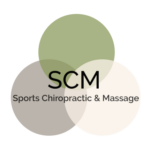Your hips support your whole upper body providing stability, strength, and mobility. It stands out as one of the most common types of joint pain potentially occurring both early and later in life. The hip joint specifically refers to where the rounded edge of the upper thigh bone (femur) connects with the socket of the pelvis, known as the acetabulum. This joint also contains connective tissue and is protected by several fluid-filled sacs called bursa. A long list of muscles connect to the hip providing it with support and producing a wide range of movement patterns. This ball and socket joint can hurt for a wide variety of reasons.
We develop hip pain for a wide variety of reasons. Overuse and improper biomechanics often lead to Bursitis or Tendinitis. Later in life we often experience degeneration in the hips also known as Arthritis.
Common Causes
- Osteoarthritis –Osteoarthritis is caused by natural wear and tear and usually presents after 50 years of age. Cardinal signs of arthritis are pain and stiffness in the morning as well as reduced range of motion.
- Low Back Pain – It is inevitable that your low back can affect the hip. Both of these areas are closely connected and if you have any kind of lower back problems it can also lead to pain in your hips. Some low back issues are spinal stenosis, misaligned joints and herniated discs.
- Bursitis/Tendinitis – These condition occurs when there is inflammation or irritation to the bursa or surrounding tendons. Both Bursitis & Tendinitis can limit motion and cause pain due to inflamed soft tissues.
Chiropractic Treatment
Chiropractors treat hip pain by mobilizing the surrounding muscles and joints to help reduce inflammation in the area as well as increase flexibility. They also employ a number of physical therapy modalities, such as e-stim & ultrasound to help reduce inflammation. Reduction of inflammation and restoration of normal movement are key when it comes to treating hip pain.
Outside of your treatments try a few exercises to help stretch your hip and get some pain relief. The pigeon yoga pose (pic above), is helpful to open your hips and keep them loose. Tight hips can limit mobility and often contribute to low back pain as well. You can also use tools at home such as a yoga strap or foam roller to help lengthen and mobilize the soft tissues.

